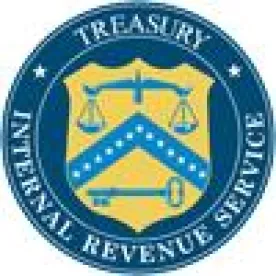On May 5, the Internal Revenue Service issued Revenue Procedure 2016-31 (the “Revenue Procedure”) describing how certain money market funds (MMFs) should treat contributions from their advisers as the MMFs try to comply with the Securities and Exchange Commission’s (SEC) money market reform rules that change how MMF shares are priced.
Under the new rules, an MMF that does not qualify as a government MMF or a retail MMF (a “floating-NAV MMF”) must value its assets using market factors rather than amortized cost and round its price per share to the nearest basis point, which is the fourth decimal point in the case of a $1.0000 share price, and must do so no later than October 14, 2016. An MMF converting to a floating NAV MMF may receive (from, for example, the MMF's adviser) a contribution so that when the MMF transitions to a floating NAV MMF all shareholders receive the same value per share at the time of the transition (a “top up contribution”). The mutual fund industry expressed concerns, however, that such a top up contribution might raise certain tax issues. The Revenue Procedure clarifies how the top-up contribution should be treated for federal income tax purposes.
By way of background, an MMF must meet certain requirements in order to receive beneficial federal income tax treatment. One of those requirements is that the MMF must distribute to its shareholders at least 90 percent of its investment company taxable income each year (the “90 percent test”) along with certain other income. If the MMF meets the 90 percent test, but distributes less than 100 percent of its investment company taxable income, the MMF must pay federal income tax on the undistributed investment company taxable income at corporate tax rates. In addition, the MMF will be subject to an excise tax for each calendar year equal to 4 percent of the excess of the required distribution for the calendar year over the distributed amount for the calendar year. For excise tax purposes, the MMF’s required distribution for a calendar year is the sum of 98 percent of the MMF’s ordinary income for the calendar year plus 98.2 percent of the MMF’s capital gain net income for the one-year period ending on October 31 of the calendar year. Undistributed amounts that are taxed at the MMF level will count towards the distributed amount.
If a top-up contribution was determined to be income that should be included in the calculation of investment company taxable income, and also be required to be distributed, then the top-up contribution would have to be substantially “grossed-up” to take into account the tax liability and the distribution requirement in order to close the difference between the $1.0000 share price and the value of the assets using market price, essentially making a top-up contribution impractical.
The Revenue Procedure applies to MMFs that receive a top-up contribution as part of a transition to implement the floating NAV reform before the October 14, 2016, compliance deadline. Generally, the Revenue Procedure provides that a top-up contribution must be included in the MMF’s investment company taxable income, but can be excluded from investment company taxable income for purposes of the 90 percent test and can also avoid the excise tax. The result is that the MMF must pay tax on the top-up contribution at corporate tax rates, but no amount of the top-up contribution needs to be distributed to shareholders. In addition, by making an election, the MMF can treat the income for which the estimated tax payments were made as amounts that count towards the distributed amount for purposes of the excise tax, which enables the MMF to avoid the excise tax that could otherwise result from not distributing the top-up contribution. In adopting these rules, the Internal Revenue Service noted that it believes that excluding certain adviser contributions from investment company taxable income for purposes of the distribution requirements is important, but it does not believe such contributions should be excluded from the MMF’s income for other federal income tax purposes. Although some may have hoped that such contributions would escape taxation, the Internal Revenue Service has at least given the industry clear guidance with respect to distribution requirements.




 />i
/>i
